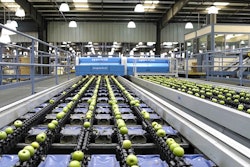
For several decades now, food manufacturers have utilized Hazard Analysis and Critical Control Points (HACCP)-based processes as a key method in maintaining food safety and quality and for mitigating risks in their final products.
Unless you are well-versed in the FDA Food Code for foodservice establishments, you may not know that there is a version of HACCP that is specifically for foodservice operations. It is called “Process HACCP.” While most food manufacturing facilities might focus on one product at a time in a more controlled business-to-business (B2B) environment, retail food establishments face a much broader range of conditions and typically deal with a wider range of products (each with its own process) simultaneously. In this business-to-consumer (B2C) setting, it becomes a necessity to focus on the overall process rather than the end product.
Process HACCP is a B2C food safety system that is an adaptation of HACCP that takes into account the whole flow of food through a retail food establishment – from receiving and storage to handling and cooking. Process HACCP defines hazards and the preventative controls within a foodservice operation or restaurant. It is the basis for the design of a robust food safety management system used to train employees, monitor controls of hazards and provide immediate corrective actions within the foodservice operation. Potential food safety hazards are analyzed that may arise during this process and apply daily management on each, called Active Managerial Control.
The use of HACCP in restaurants has its roots in the FDA food code, where the code requires a comprehensive HACCP plan when conducting certain specialized food preparation processes, such as reduced oxygen packaging for time/temperature control for safety foods, smoking foods, etc.
Process HACCP is similar to HACCP, but it includes more detail in the development of the plan for a foodservice operation. Process HACCP is defined in the FDA food code 2017 in Annex 4 and is described as the best means to accommodate the multiple food preparation methods in a retail foodservice establishment in order to apply the same principles as HACCP.
While HACCP and Process HACCP are very similar and have similar foundations, they do differ for a variety of reasons:
● Restaurants and other foodservice establishments produce multiple food products, based on their menu, within the same food preparation area, whereas most food manufacturing facilities often have a single commodity type or process.
● Most foodservice facilities have a number of attributes that are different from a food manufacturing facility.
o A high rate of turnover for employees and managers
o Many restaurant owners and operators were not previously in the food preparation business. They may operate a single location, without the benefit of corporate food safety or training programs.
o Many foodservice businesses have multiple and frequently changing menus, e.g. limited time offers (LTOs) with frequent changes in recipes, and the addition of new products and ingredients.
o Customers enter, eat, and use the dining rooms and restrooms in the facility close to where the food is actually prepared.
● A Process HACCP plan is required for each recipe and menu item. It identifies hazards at each stage of the preparation of all menu items. All of the critical limits are then controlled at each point in the process.
The FDA recommends beginning the approach to Process HACCP by identifying the hazards that occur during processes for the complete menu and during the tasks that are conducted as a part of the Prerequisite Control Program, e.g. employee personal hygiene, employee food safety training, sanitation controls, health policy to reduce the risk of sick workers, sourcing safe ingredients, cleaning and sanitation, etc.
Process HACCP and the supporting Prerequisite Control Program is a comprehensive method for controlling hazards associated with a foodservice operation.
Using technology to support Process HACCP
A lot has changed since the creation, adaptation and adoption of Process HACCP in retail food and foodservice operations. In the past, implementing a HACCP-based food safety management system meant relying mostly on manual procedures, pen and paper checklists, and managerial oversight. But, that paper/checklist model has become outdated and unsustainable, particularly for larger brands with hundreds to thousands of locations.
Software and technology platforms have advanced dramatically since 1997, the year the Excel spreadsheet was born. Today, we have the ability to digitize Process HACCP, and increasingly, brands are utilizing technology to automate line checks, monitor temperatures and perform operational procedures. When applying technology to ensure food safety, quality and consistency, brands experience the following benefits:
- Increased productivity. Mobile apps that include integrated policies, standard operating procedures, training materials, and scheduled tasks and checklists ensure new employees get up to speed quickly and all team members always know what is expected.
- Increased accountability. Automating and digitizing Process HACCP ensures tasks are scheduled at the right time and assigned to the right employees, providing visibility into when tasks are completed and by whom. This ensures food safety procedures and checks are being followed and completed as expected.
- More and better data quality. Technologies like Bluetooth Low energy (BLe) temperature probes and Internet of Things (IoT) sensors provide brands with access to highly accurate data and more of it. These systems can continuously analyze data to detect issues and trends.
- Automated alerts sound the alarm. Data analytics and automated sensors provide an early warning system, alerting management to potential problems (e.g., an out-of-range temperature control) before a more serious food safety hazard develops.
- Greater visibility and control. Cloud-based digitization allows brands to centrally access records for any restaurant at any time. This gives them complete visibility—from minute details to chain-wide processes— allowing them to make changes to their programs and ensure corrective actions are taken without having to physically visit a location, all in real time.
Perhaps, more importantly, the investment in digital Process HACCP affirms a brand’s commitment to food safety and the protection of the health and safety of their customers. Through digitization of hourly, daily, weekly, monthly and quarterly routines, a brand creates a culture of food safety and a mindset for continuous improvement and optimization — from entry-level employees to senior management.

















